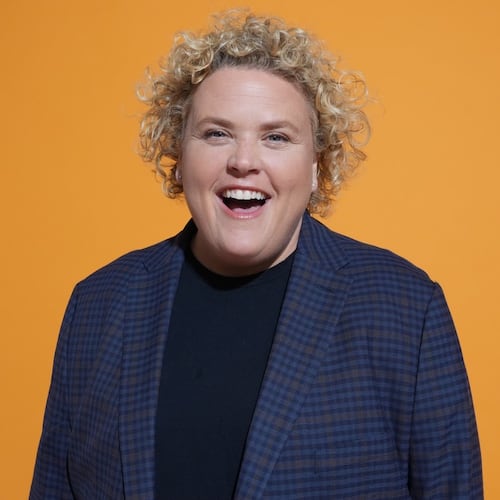Do hospitals really charge patients $15 for a Tylenol and even more for a bandage? How much will I get billed for my new pacemaker? Will my emergency care for a heart attack cost more than my house?
Health care pricing has always been complex, confounding and mysterious, with the prices revealed after the care is provided, instead of before.
Starting Jan. 1, a new federal rule will require the nation's hospitals to post all their full-price charges on their websites. The idea is to introduce transparency into the world of hospital charges. But these newly-published price lists may end up leaving consumers even more confused than ever before.
Hospital pricing isn’t a menu where everybody pays the same amount. It’s more like an insanely complex version of airline pricing where one passenger pays $200 for pre-booked aisle seat in coach, while the person sitting in middle seat may pay $750 to travel the same route.
The new federal rule requires hospitals to publish their “chargemaster” prices. That’s the “list-price” charge that almost nobody actually pays.
Government health care plans, such as Medicare and Medicaid, ignore the list prices and decide on their own what they will pay for care. Every private insurance plan negotiates with hospitals to agree on prices that can vary greatly from one health system to the next.
“Everybody is charged the same, but we don’t get paid the same,” said Ethan James, spokesman for the Georgia Hospital Association.
While most of the large health care systems around Atlanta planned to post the lists on Tuesday, Piedmont Healthcare already had its price list posted in December.
Piedmont’s list shows that consumers won’t be able to use a hospital’s chargemaster to find out how much an ER visit or heart bypass surgery costs and use that information to comparison shop. There are thousands of items with descriptions that few consumers would actually understand. Search for pacemaker and several options come up, with prices that vary by thousands of bucks. There are more than a thousand charges for different types of screws used in surgeries, some costing hundreds of dollars, others in the thousands.
Even finding out the charge for a Tylenol isn’t as easy as it might seem. Piedmont’s chargemaster for its Atlanta hospital has all sorts of variations of “acetaminophen.” Some are pills that also include hyrocodone, some have codeine, and the strengths vary along with the list prices that run from about $30 to over $500.
The hospital’s website cautions consumers that the best way to get an accurate estimate of out of pocket costs it to call the hospital’s “Patient Financial Care” team.
When it’s all over, the full-price bill and the negotiated amount that the insurers actually pay are hundreds, if not thousands of dollars, apart.
“The expectation that consumers can extract value from a hospital chargemaster is unrealistic,” said Christopher M. Kane, an Atlanta-based consultant with Progressive Healthcare. “It’s the equivalent of a list of ingredients and expecting someone to cook an award-winning Ritz Carlton meal.”
Kane said the new price lists aren’t like Kroger and Publix being required to publish their prices for every item in the grocery story. That’s the kind of list consumers could use to check a few prices and then decide which store offers a better deal.
In health care, Kane said, this “charge” has little or no correlation to the patient’s out-of-pocket costs because of the discounts every insurance company gets. Plus, a good deal in health care isn’t just about price. Quality is also an important part of the overall assessment of value in health care, Kane said.
Adding to the confusion, a patient doesn’t just get a bill from the hospital after going in for care. Separate bills can also arrive from various doctors and therapists.
“As an industry, hospitals have a business model that defies belief,” Kane said. “An admission to the hospital generates bills from myriad entities. It’s a consumer’s Rubik’s Cube as the patient typically waits to determine the amounts that insurance will pay.”
Kane said that uninsured, “self-pay” patients could benefit from the new price lists by using them as a negotiating tool to request deep discounts on how much they will actually have to pay. Plus, Kane said, he expects entrepreneurs to use the data to create apps and other tools that could assist patients who want to be more savvy about their health care decisions.
“Despite the limitations, the new federal requirements are a step forward as health care inches toward a consumer-oriented approach,” he said.
The health insurance lobby supported the new requirement for tranparency, but also pushed for regulators to go further and find a way to get consumers accurate information about what they will owe, given the kind of health plan they have.
Northside Hospital said it will try to give consumers some context when viewing its price list when it goes live Jan. 1.
“Northside will have links from our website home page to our overall price information, with breakouts of pricing for some of our most common services,” said Lee Echols, Northside’s vice president of marketing. “We’ll provide additional information addressing how other factors, such as copay and deductibles, affect a patient’s bills.”
Paging through the hospital charge lists will make one thing clear: Health care is different from almost any other industry when it comes to pricing and consumer information. Hospitals understand that. They have to deal with being paid many different amounts for the same service, depending on who is covering the cost.
“Some hospitals have hundreds of different insurance contracts out there and to navigate that maze — for people who do it on a daily basis, that’s their job — is complex,” said James, of the Georgia Hospital Association. “For the consumers, for the patient, it’s almost overwhelming.”
What it means for consumers
Hospitals must post full-price charges on their websites starting January 1. The detailed charges will be a step toward pricing transparency in the health care system, but the new information will be of limited value to consumers. That’s because insurance companies have contracts with hospitals and pay far less than the full charges. Medicare and other government health plans set their own rates and also do not pay the full-price charges.
About the Author
The Latest
Featured





